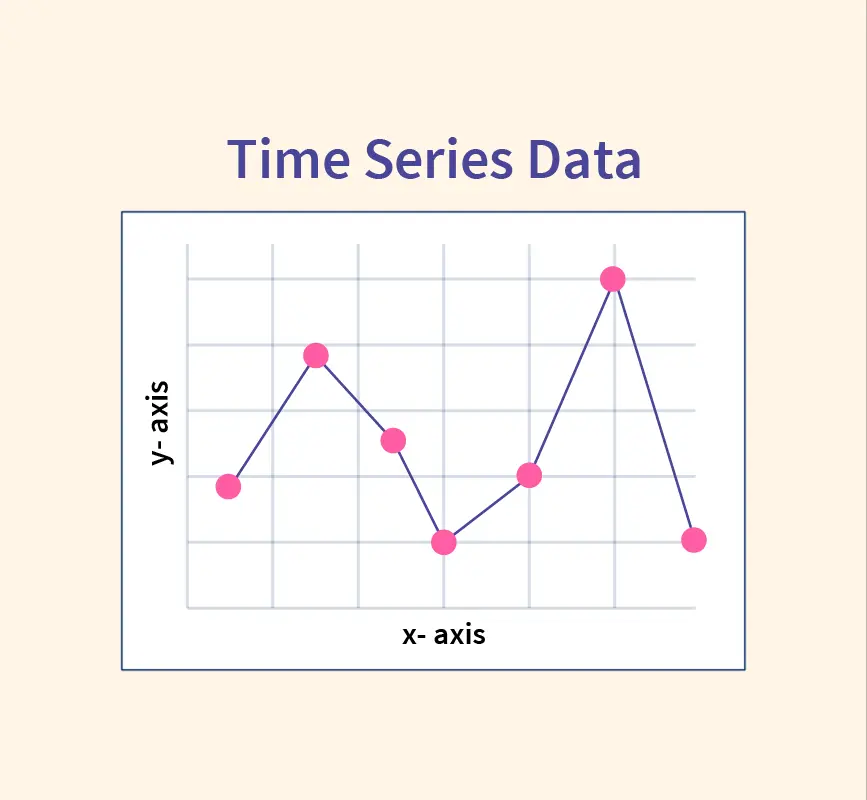In machine learning, accuracy is a crucial performance metric used to evaluate how well a model predicts labels for unseen data. It measures the proportion of correct predictions to the total number of predictions. However, accuracy alone can be misleading in certain scenarios, such as with imbalanced datasets. For instance, a model predicting 99% of outcomes correctly may still fail if it overlooks key minority class predictions.
Therefore, it is essential to understand when accuracy is appropriate and what limitations it presents. A comprehensive evaluation often requires other metrics, such as precision, recall, and F1-score, to assess model performance holistically.
Accuracy
Accuracy is the ratio of correct predictions to the total number of predictions. It’s a straightforward performance metric used in classification tasks to determine how well the model predicts both positive and negative outcomes.
The formula for calculating accuracy is:
$$\text{Accuracy} = \frac{\text{Number of Correct Predictions}}{\text{Total Predictions}} \times 100$$
Accuracy provides insight into the proportion of predictions the model got right out of all the predictions made.
Example of Accuracy Calculation
Consider a binary classification problem where the task is to predict whether an email is spam. Out of 100 emails, the model correctly predicts 85 as either spam or non-spam. The accuracy would be:
$$\text{Accuracy} = \frac{85}{100} \times 100 = 85\%$$
This indicates that the model correctly identified 85% of the emails. However, while accuracy gives a general sense of performance, it may not always provide the full picture—especially when dealing with imbalanced datasets.
The Accuracy Paradox: When Accuracy Can Be Misleading
The accuracy paradox refers to situations where a model with high accuracy performs poorly on key aspects of the task. This occurs when the dataset is imbalanced, meaning that one class (e.g., non-spam emails) is much larger than the other (e.g., spam emails). A model that predicts all emails as non-spam would still achieve high accuracy if the majority of emails are not spam.
Real-World Example
Consider a medical diagnosis model where 98 out of 100 patients are healthy, and only 2 patients have a disease. If the model predicts all patients as healthy, it achieves 98% accuracy. However, this result is meaningless since the model fails to identify any sick patients. In such cases, accuracy provides a misleading sense of the model’s effectiveness.
Alternatives to Accuracy
When dealing with imbalanced datasets, it is essential to use alternative metrics like:
- Precision: Measures the proportion of true positives among predicted positives.
- Recall: Captures how well the model identifies all relevant positive cases.
- F1-Score: A harmonic mean of precision and recall, useful when a balance between both metrics is required.
Measuring Accuracy in Different Classification Scenarios
1. Accuracy in Binary Classification
In binary classification, there are two possible outcomes (e.g., positive and negative). Accuracy is measured as the ratio of correct predictions to the total number of predictions.
$$\text{Accuracy} = \frac{TP + TN}{TP + TN + FP + FN} \times 100$$
Where:
- TP: True Positives
- TN: True Negatives
- FP: False Positives
- FN: False Negatives
Example:
In a binary model predicting whether a transaction is fraudulent, if the model correctly identifies 90 out of 100 transactions, the accuracy will be:
$$\text{Accuracy} = \frac{90}{100} \times 100 = 90\%$$
Binary classification accuracy is particularly useful when both classes are evenly represented. However, for imbalanced datasets, other metrics like precision, recall, and F1-score become more reliable indicators.
2. Accuracy in Multiclass Classification
In multiclass classification, the model assigns a data point to one of several classes. Accuracy is still measured as the ratio of correct predictions to total predictions, but there are additional complexities due to multiple classes.
$$\text{Accuracy} = \frac{\text{Number of Correct Predictions}}{\text{Total Predictions}} \times 100$$
Example:
In a model predicting weather conditions (sunny, rainy, cloudy), if the model correctly predicts 80 out of 100 samples, its accuracy would be:
$$\text{Accuracy} = \frac{80}{100} \times 100 = 80\%$$
When the class distribution is uneven, accuracy can be misleading. In such cases, metrics like macro-average precision and micro-average precision offer better insights.
3. Accuracy in Multilabel Classification
In multilabel classification, each data point can belong to more than one class simultaneously. For instance, an image of a forest may be tagged as nature, forest, and green.
$$\text{Accuracy} = \frac{\text{Number of Correct Labels Predicted}}{\text{Total Labels}} \times 100$$
Since multiple labels are involved, simple accuracy may not fully capture the model’s performance. Instead, metrics like subset accuracy (exact match ratio) and average accuracy per label are used to assess the effectiveness.
Example:
In a multilabel movie recommendation system, the model may need to correctly assign multiple genres to a single movie. If it misses even one label, subset accuracy drops to 0% for that data point, making it a strict evaluation metric.
4. Hamming Loss in Multilabel Classification
Hamming Loss is an alternative metric for evaluating multilabel classification models. It measures the fraction of incorrect label predictions relative to the total number of labels.
$$\text{Hamming Loss} = \frac{1}{N} \sum_{i=1}^{N} \frac{\text{Hamming Distance}(y_i, \hat{y}_i)}{\text{Total Labels}}$$
Where:
- $y_i$ is the actual label set
- $\hat{y}_i$ is the predicted label set
Hamming Loss is useful because it captures partial correctness, unlike subset accuracy, which demands all labels to match exactly.
Example:
In a news classifier predicting topics (sports, politics, health), even if the model misses one topic, the Hamming Loss reflects partial correctness, providing a more balanced evaluation.
Subset Accuracy or Exact Match Ratio
Subset Accuracy, also known as Exact Match Ratio, is a strict evaluation metric used primarily in multilabel classification. It measures the proportion of instances where the predicted label set matches the true label set exactly. For a prediction to be considered correct, every label in the prediction must match the corresponding label in the ground truth.
$$\text{Subset Accuracy} = \frac{\text{Number of Exact Matches}}{\text{Total Instances}} \times 100$$
Example of Subset Accuracy
Consider a model that predicts topics for news articles. For an article labeled as {sports, health}, the model must predict exactly those two labels. If it predicts {sports, politics}, it will be marked as incorrect, even though one label overlaps.
Benefits of Subset Accuracy
- Strict Evaluation: Useful when every label matters, such as in medical diagnoses or legal classifications.
- Effective for Critical Applications: It ensures high precision by demanding perfect predictions.
Limitations
- Harsh Metric: A partially correct prediction is treated as completely wrong.
- Sensitivity to Label Noise: Small label mismatches significantly reduce the score, making it challenging for models to perform well.
Subset accuracy works best when exact matches are critical to the task.
Additional Metrics for Evaluating Model Accuracy
While accuracy is a popular performance metric, it may not always offer a comprehensive view of a model’s effectiveness. Additional metrics like precision, recall, and F1-score provide deeper insights into model performance, especially for imbalanced datasets.
Precision
Precision measures the proportion of true positive predictions out of all predicted positives:
$$\text{Precision} = \frac{TP}{TP + FP}$$
- Example: In a fraud detection model, precision ensures that flagged transactions are genuinely fraudulent, minimizing false alarms.
Recall (Sensitivity)
Recall measures the proportion of true positives correctly identified out of all actual positives:
$$\text{Recall} = \frac{TP}{TP + FN}$$
- Example: In medical diagnosis, recall ensures that the model identifies most of the positive cases (e.g., detecting cancer).
F1-Score
The F1-score is the harmonic mean of precision and recall, balancing both metrics:
$$\text{F1-Score} = 2 \times \frac{\text{Precision} \times \text{Recall}}{\text{Precision} + \text{Recall}}$$
- Example: In classification tasks where both false positives and false negatives are costly, such as spam filtering, F1-score offers a more balanced evaluation.
Complementing or Replacing Accuracy
These metrics complement accuracy by addressing its limitations, especially with imbalanced datasets. For example, high recall is crucial in healthcare, where missing a diagnosis has severe consequences, even if overall accuracy is high. In contrast, precision is more important in fraud detection, where false positives can disrupt operations.
When to Use Accuracy Score in Machine Learning?
Accuracy works well when the dataset is balanced—that is, when the distribution of classes is fairly even. In such cases, the proportion of correct predictions provides a reliable measure of model performance. For example:
- Image classification: Tasks like identifying objects in balanced datasets (e.g., animals vs. plants) benefit from using accuracy.
- Simple binary classification: Accuracy performs well in tasks like email spam detection when spam and non-spam emails are present in similar proportions.
Guidance on Choosing the Best Metric
Accuracy is not always the most reliable metric, especially for imbalanced datasets. In cases where false positives or false negatives have different costs, other metrics like precision, recall, or F1-score should be used instead. For instance:
- Healthcare models: Use recall to ensure that positive cases (e.g., diseases) are not missed.
- Fraud detection systems: Use precision to avoid flagging legitimate transactions as fraudulent.
The choice of metric should align with the task’s goals and the nature of the data, ensuring meaningful performance evaluation.
Steps to Measure the Accuracy of Your Model
Below is a step-by-step guide to measuring model accuracy using Python’s scikit-learn library.
Step 1: Import Libraries and Load the Data
from sklearn.datasets import load_iris
from sklearn.model_selection import train_test_split
from sklearn.metrics import accuracy_scoreUse the Iris dataset as an example. Split it into training and testing sets:
data = load_iris()
X_train, X_test, y_train, y_test = train_test_split(data.data, data.target, test_size=0.3, random_state=42)Step 2: Train a Model
Here, we use a decision tree classifier for simplicity:
from sklearn.tree import DecisionTreeClassifier
model = DecisionTreeClassifier()
model.fit(X_train, y_train)Step 3: Make Predictions and Calculate Accuracy
After training, generate predictions on the test data:
y_pred = model.predict(X_test)
accuracy = accuracy_score(y_test, y_pred)
print(f'Accuracy: {accuracy * 100:.2f}%')Step 4: Evaluate with Additional Metrics
Use other metrics for a more complete evaluation:
from sklearn.metrics import precision_score, recall_score, f1_score
precision = precision_score(y_test, y_pred, average='macro')
recall = recall_score(y_test, y_pred, average='macro')
f1 = f1_score(y_test, y_pred, average='macro')
print(f'Precision: {precision:.2f}, Recall: {recall:.2f}, F1-Score: {f1:.2f}')This process ensures you accurately measure your model’s performance while also evaluating other metrics to address specific data challenges.
Tips to Improve Model Accuracy
Improving model accuracy requires a combination of data management and optimization techniques. Below are key strategies to enhance performance:
1. Data Quality
High-quality data ensures reliable predictions. Cleaning the dataset to remove outliers, handle missing values, and correct inconsistencies improves accuracy.
2. Feature Selection
Selecting relevant features reduces noise and enhances model performance. Techniques such as correlation analysis and feature importance ranking help in identifying impactful features.
3. Hyperparameter Tuning
Adjusting model parameters (e.g., learning rate, number of estimators) optimizes performance. Use methods like grid search and random search for fine-tuning hyperparameters.
4. Cross-Validation
Applying k-fold cross-validation ensures the model generalizes well across different subsets of data, reducing the risk of overfitting.
5. Ensemble Methods
Combining multiple models using bagging or boosting techniques can lead to improved accuracy by leveraging the strengths of individual models.
Conclusion
Accuracy is a key metric for evaluating the performance of machine learning models, providing insights into how well the model predicts outcomes. However, it is essential to recognize the limitations of accuracy, especially with imbalanced datasets, where additional metrics such as precision, recall, and F1-score offer a more comprehensive evaluation.
For effective model assessment, it is crucial to balance accuracy with other metrics and consider the specific requirements of the task. Using proper evaluation techniques and improving data quality and model parameters will help ensure that the model performs well in real-world applications.
References:


